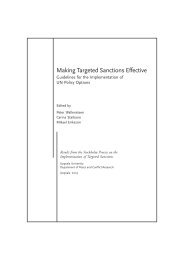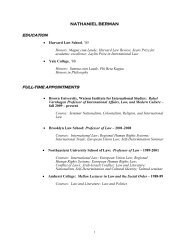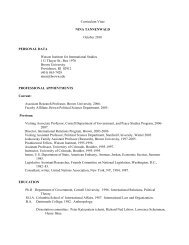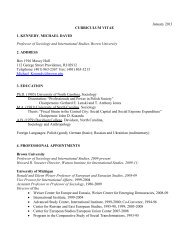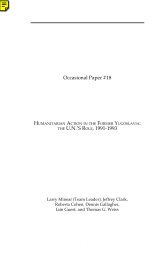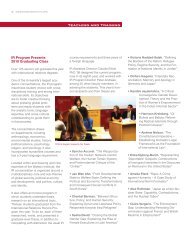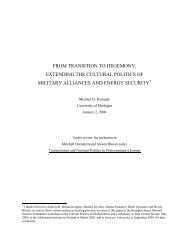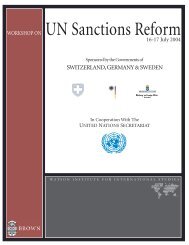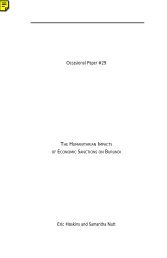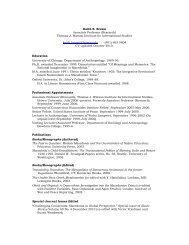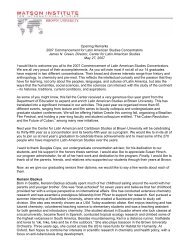How to Think About Civilizations - The Watson Institute for ...
How to Think About Civilizations - The Watson Institute for ...
How to Think About Civilizations - The Watson Institute for ...
Create successful ePaper yourself
Turn your PDF publications into a flip-book with our unique Google optimized e-Paper software.
distinctions rather than treating them as the absolute boundaries of a fixed conceptual<br />
terri<strong>to</strong>ry. To identify a given piece of scholarship as supervening on an attributeon<strong>to</strong>logy<br />
and the scholarly specification of social objects is, in this rendering, <strong>to</strong><br />
implicitly compare the piece of scholarship with others by comparison with which it<br />
engages in the scholarly specification of essential attributes and conducts its<br />
explanations in terms of interests. I have placed Hunting<strong>to</strong>n in the upper left-hand<br />
corner of my matrix; my doing so is a reflection of my judgment that in any comparative<br />
context involving civilizational scholarship and scholars, Hunting<strong>to</strong>n will occupy the<br />
relatively interest-based position. And since my starting-point <strong>for</strong> this analysis—indeed,<br />
the conceptual starting-point <strong>for</strong> the volume as a whole—was a rejection of<br />
Hunting<strong>to</strong>nian essentialism, treating Hunting<strong>to</strong>n as the relatively fixed point of<br />
reference against which <strong>to</strong> define alternatives is simply a reflection of the empirical<br />
character of the scholarly discussion itself.<br />
Graphically, we might imagine my two-by-two matrix replicating itself within<br />
each cell of the original matrix, which would yield 4 x 4 = 16 different positions that<br />
civilizational scholarship might in principle occupy. As a first benefit, this allows much<br />
more fine-grained specifications of where scholars fall in relation <strong>to</strong> one another. For<br />
example, consider a further internal division of the “structural context” quadrant:<br />
<strong>How</strong> <strong>to</strong> <strong>Think</strong> <strong>About</strong> <strong>Civilizations</strong> • P. T. Jackson • Page 29



